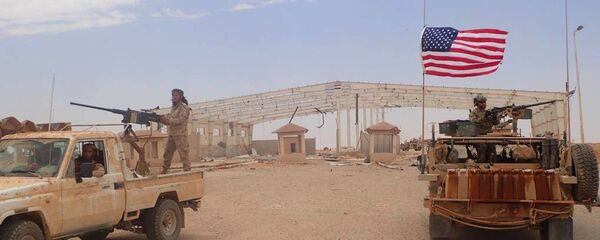"The US has redeployed two High Mobility Artillery Rocket Systems from Jordan to a US special operations forces base near the Syrian town of al-Tanf [18 kilometers from the Jordanian border]. Deployment of any foreign weaponry to Syria, especially multiple artillery rocket systems, has to be coordinated with the sovereign state's government", the ministry's statement read.
It noted that "the range of HIMARS cannot allow for providing support for US-controlled Syrian Democratic Forces (SDF) operating against Daesh in Raqqa".
"The US-led anti-Daesh coalition has several times already attacked Syrian government forces fighting Daesh near the Jordanian border. It is possible to assume that similar strikes could be continued in the future, involving HIMARS from now on. So what objectives is the US pursuing in Syria and whom are the US servicemen fighting there?", the statement said.
On June 8, the coalition bombed pro-Damascus forces in Syria near the town of al-Tanf. On June 6, the coalition conducted a strike on pro-Syrian government forces as they entered a de-confliction zone and allegedly posed threat. On May 18, the coalition hit pro-Assad fighters near al-Tanf for the first time.
Furthermore, on September 16, US-led coalition aircraft carried out four strikes against the Syrian Army near the Deir ez-Zor airport, killing nearly 100 people, according to reports.
The US-led coalition of 69 members is conducting airstrikes, ground-based and rocket-propelled artillery fire against the Daesh in Syria and Iraq. The strikes in Iraq are conducted in support of the Iraqi government, but those in Syria are not authorized by the UN Security Council or the government of President Bashar Assad.



